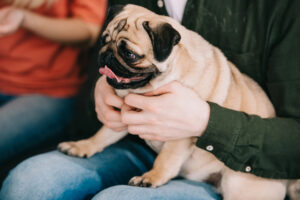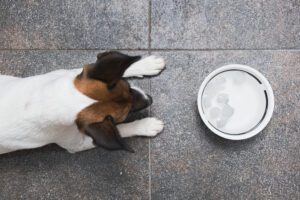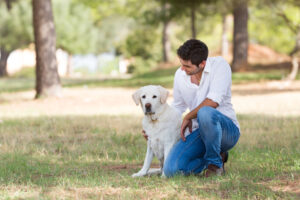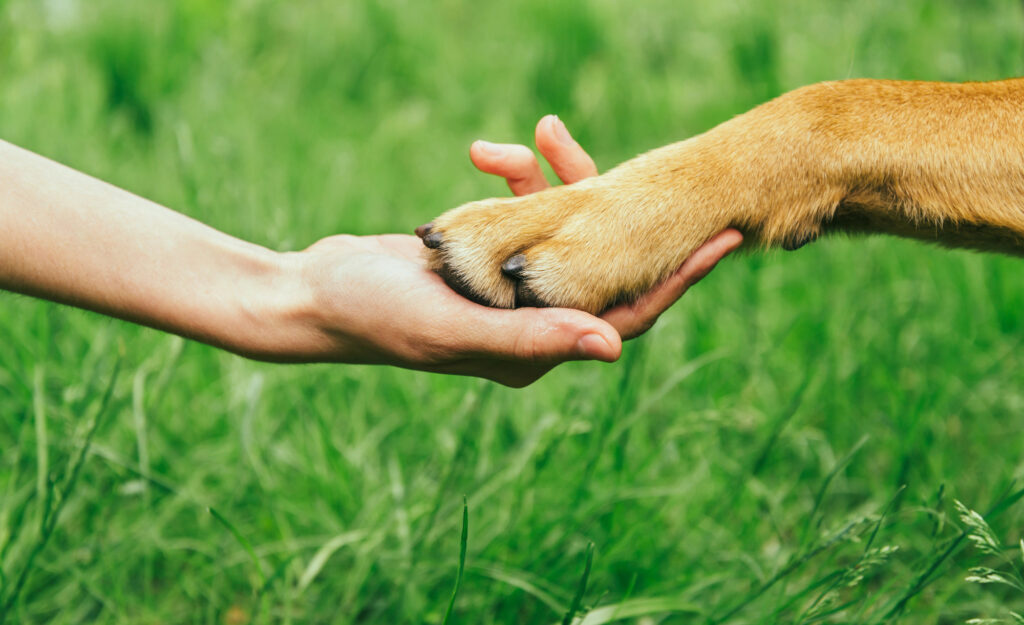
How Hot Does the Weather Have to Be for Pavement to Burn My Dog’s Paws?
As the summer heats up, many dog owners are very aware of the risks that the heat can pose to their furry friends. We usually think about giving our dogs plenty of water and shade to stay cool, but the hot pavement is another danger that we often forget about. The pavement can get very hot, which can burn your dog’s paws badly and cause pain, discomfort, and even long-term damage. But how hot does the ground have to be for a dog’s paws to get burned? Here is some information on hot pavement and its affect on paws.

Boarding Clients!*Discount does not apply during holiday/peak rate periods.

Understanding Pavement Temperatures
The temperature of the road may be much higher than the temperature of the air. Surfaces that are dark, like asphalt, absorb and hold heat better than surfaces that are lighter. The pavement can get so hot on a sunny day that it’s not safe for your dog’s paws. When the air is 77°F (25°C), asphalt that is in the sun can get as hot as 125°F (51°C). When the air is 86°F (30°C), the asphalt can get as hot as 135°F (57°C). These temperatures are so high that they will burn and blister you in minutes.
How Hot Is Too Hot?
Veterinary experts say that burns can happen in as little as 60 seconds on pavement that is 120°F (49°C) hot. If the pavement is over 140°F (60°C), they could get burned in less than a minute. So, it’s best not to walk your dog on the sidewalk if the temperature is 85°F (29°C) or higher, especially when the sun is shining the brightest.
Why Are Dogs' Paws Vulnerable?
Even though dog paws look tough, they are soft. Dogs’ pads on their feet are made of special skin that is thick and strong, but they can still get burns, cuts, and scrapes. If you want to know why dog paws are so easily burned, take a quick look at how they are built:
Digital Pads: These are the small, round pads that go under each toe and give you support and grip.
Metacarpal Pad: This is the big pad in the middle of the paw, which is also called the “palm” of the dog’s foot. It helps distribute weight and absorb shock.
Carpal Pad: This pad is higher up on the back of the front leg and gives the dog more grip when it is climbing or stopping quickly.
The tough outer layer of these pads is meant to protect the soft inner layers that have nerves and blood vessels in them. Even though these pads have a tough outside, being near hot surfaces for a long time can damage them and cause a lot of pain and injury.
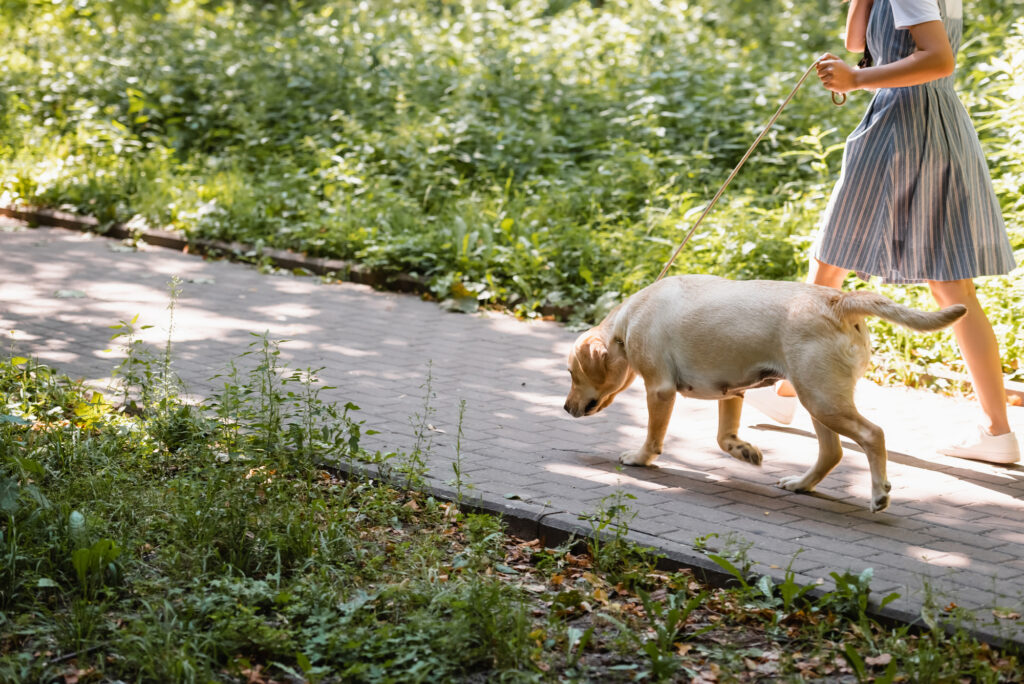
Signs of Burned Paws
If you want to help your dog feel less pain, you need to know how to spot the signs of burned paws right away. Some symptoms are:
- Limping or avoiding walking
- Licking or chewing at their feet
- Redness or discoloration of the pads
- Blisters or ulcers
- Parts of the pad peeling off
It’s important to take action right away to soothe and protect your dog’s paws if you see any of these signs.
Immediate Steps for Burned Paws
These steps will help if your dog’s paws are burned:
Move to a Cool Surface: Get your dog off the hot pavement immediately and onto a cool, shaded area.
Cool the Paws: Put your dog’s paws in cool water for at least 10 minutes. Make sure the water is not ice cold. This cools things down and makes the burn feel better.
Inspect the Damage: See if there are any blisters, redness, or peeling. Take the animal to the vet right away if the burns are very bad.
Apply Paw Balm: Use a paw balm or ointment that has been approved by a vet to keep the pads moist and help them heal.
Prevent Further Injury: Your dog shouldn’t walk on rough ground or go on long walks until their paws are better.
Preventing Paw Burns
It’s always better to avoid problems than to fix them. To keep your dog’s paws from getting burned on hot pavement, try these things:
Walk During Cooler Times: Plan your walks for early morning or late evening, when the ground is cooler. Don’t go for walks in the middle of the day when the sun is up.
Test the Pavement: Put the back of your hand on the ground for seven seconds to do the “seven-second test.” It’s too hot for your dog if it’s too hot for you.
Use Paw Protection: Putting dog booties or paw wax between the pavement and your dog’s pads can protect them.
Walk on Grass: If you can, walk your dog on grass instead of the sidewalk. It stays cooler on grass, and it’s easier on their paws.
Stay Hydrated: Make sure your dog drinks plenty of water because being dehydrated can make them more likely to get hurt in the heat.
Provide Shade: When you go for walks with your dog, make sure they can get some shade to cool off.
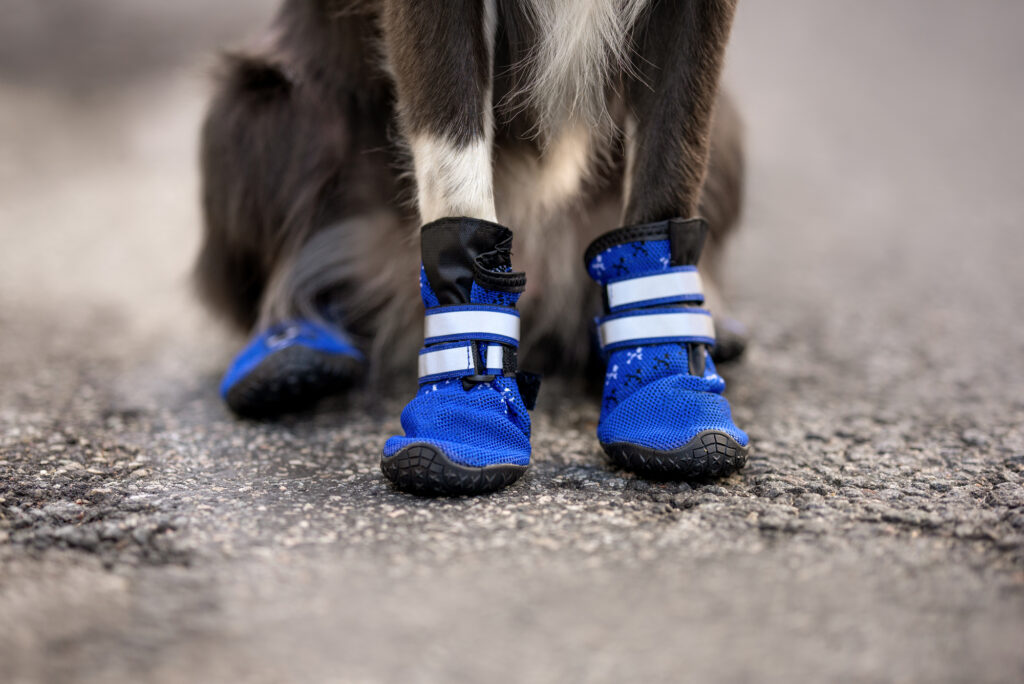
Long-term Care and Conditioning
You can take immediate steps to protect your dog’s paws, but you can also train them to be stronger over time. They can keep their pads soft and less likely to crack by moisturizing them regularly. You can also slowly expose them to different surfaces to make them stronger, but be careful and watch for any signs of pain or damage.
When to Seek Veterinary Care
Most minor burns can be treated at home, but serious burns need to be treated by a doctor. If your dog’s paws are badly burned or bleeding, or if your dog is in a lot of pain, you should take them to the vet right away. If you don’t treat burns properly, they can get infected, which can cause more serious health problems.
Overall
A very important part of summer pet care is keeping your dog’s paws off of hot pavement. By knowing the risks and taking action, you can make sure that the warmer months are safe for your dog. Don’t forget that if your hand is too hot, so are your dog’s paws. To keep your furry friend’s paws safe and healthy, pay attention to how hot the ground is, change how often you walk, and think about getting protective gear. If you know what to do and get ready, you can keep your dog happy and active all summer without giving them painful burns.
FAQ: Protecting Your Dog's Paws from Hot Pavement
How hot does the pavement have to be to burn my dog's paws?
Even when it’s only 77°F (25°C) outside, the pavement can get too hot for your dog’s paws. The pavement can get as hot as 125°F (51°C), which will burn you in just one minute. If the air is 85°F (29°C), the pavement can get to 135°F (57°C), which is hot enough to burn you in less than a minute.
What are the signs that my dog's paws are burned?
Some common signs are:
• Walking with trouble or a limp
• Too much chewing or licking at their feet
• Pads that are red or discolored
• Sores or blisters on the pads
• Pads flaking off or peeling
What should I do if my dog's paws are burned?
Steps to take right away:
• Take your dog to a cool, shady spot.
• Put their paws in cool water for at least 10 minutes. The water shouldn’t be ice cold.
• Check to see if the paws are hurt.
• Use a paw balm or ointment that has been approved by a vet.
• Keep your dog off of hot or rough surfaces to avoid more harm.
• Get your dog to the vet if the burns look bad or if he or she is in a lot of pain.

How can I prevent my dog's paws from getting burned?
Some preventative steps are:
• You should walk your dog in the early morning or late evening when it’s cooler.
• Using the “seven-second test” to check pavement temperature (place the back of your hand on the pavement for seven seconds; if it’s too hot for you, it’s too hot for your dog).
• Putting on safety gear like dog booties or paw wax.
• Instead of walking your dog on the sidewalk, walk them on grass or in the shade.
• During walks, make sure your dog stays hydrated and has access to shade.
Are there any products that can help protect my dog's paws?
Yes, several products can help, such as Dog booties, paw wax, and cooling pads.
Can I toughen up my dog's paws to prevent burns?
You can make your dog’s paws stronger by exposing them to different surfaces slowly, but you should be careful when doing this. They can also keep their pads soft and less likely to crack by moisturizing them regularly. Always keep an eye out for signs of pain or damage, and stay away from surfaces that are too hot.
How can I test if the pavement is too hot for my dog's paws?
• Use the “seven-second test”
• Hold your hand on the ground for seven seconds with the back of your hand down.
• If it’s too hot for your hand, it’s too hot for your dog’s paws.
What times of the day are safest for walking my dog in the summer?
When it’s hot outside, the safest times to walk your dog are early in the morning and late at night, when the pavement is cooler. When the sun is at its strongest, the pavement is likely to be the hottest. So don’t go for walks in the middle of the day.







